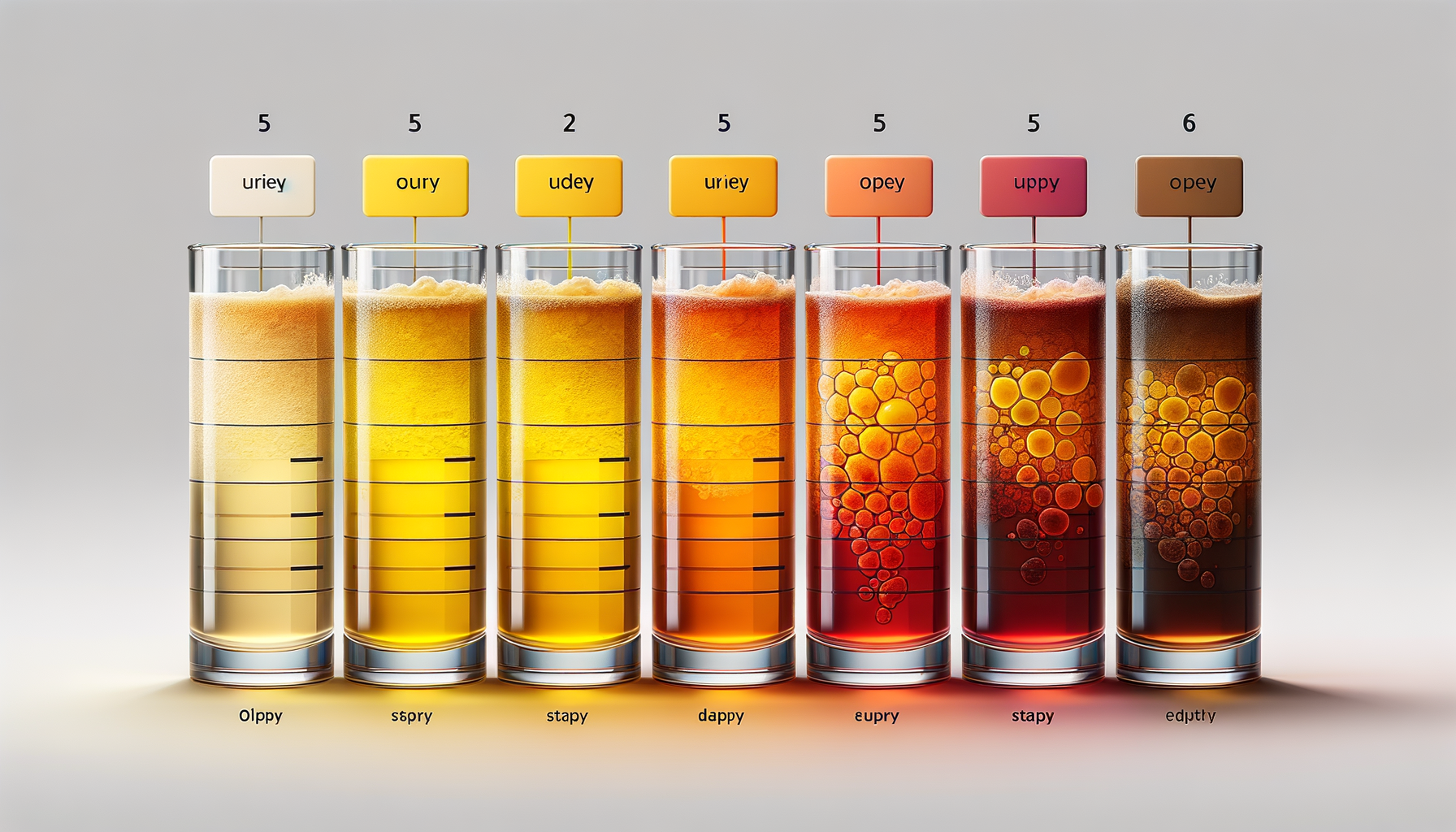
5 Early Signs of Kidney Disease: What Your Urine Color May Reveal
Introduction to Urine Color and Health
Urine color can be a window into your body’s health, providing clues about hydration levels, dietary habits, and even potential medical conditions. The color of your urine is influenced by a variety of factors including the amount of water you consume, the foods you eat, and medications you take. Understanding these variations can help you recognize when something might be amiss. In this article, we’ll explore the significance of urine color and how it relates to kidney health, a crucial aspect of overall well-being.
The Science Behind Urine Color
Urine gets its color primarily from a pigment called urochrome. Depending on its concentration, urine can range from pale yellow to deep amber. The kidneys play a pivotal role in this process by filtering waste products and excess substances from the blood, which are then excreted in urine. When the kidneys are functioning efficiently, they maintain a balance of electrolytes and other substances, which is reflected in the consistency and color of urine.
Several factors can influence urine color, including:
- Hydration levels: Dehydration can lead to darker urine, while ample water intake usually results in lighter urine.
- Diet: Foods like beets, berries, and fava beans can alter urine color.
- Medications: Some drugs can cause urine to appear red, orange, or even blue or green.
Understanding these influences can help you discern normal variations from potential health issues.
Common Urine Colors and Their Meanings
While urine color can vary widely, certain hues can indicate specific health concerns. Here’s a breakdown of common urine colors and what they might signify:
- Clear or Pale Yellow: Indicates proper hydration and well-functioning kidneys.
- Dark Yellow or Amber: Often a sign of dehydration, requiring increased water intake.
- Orange: Could be due to dehydration, dietary factors, or certain medications. In some cases, it might suggest liver or bile duct issues.
- Pink or Red: May result from consuming certain foods or could indicate the presence of blood, necessitating medical evaluation.
- Brown: This color may be linked to severe dehydration or liver conditions and warrants medical attention.
Recognizing these colors and their potential implications can empower you to take proactive steps towards maintaining kidney health.
When to Seek Medical Advice
While variations in urine color are often harmless, certain changes should prompt medical consultation. Persistent changes in urine color, especially those accompanied by other symptoms like pain, fever, or swelling, should not be ignored. These could be early signs of kidney disease or other medical conditions.
It’s important to monitor for the following symptoms alongside urine color changes:
- Frequent urination, especially at night
- Foamy or bubbly urine
- Swelling in hands, feet, or around the eyes
- Fatigue or difficulty concentrating
If you experience any of these symptoms, it’s advisable to consult a healthcare professional for a thorough evaluation.
Maintaining Kidney Health Through Lifestyle Choices
Maintaining kidney health is crucial for overall well-being, and lifestyle choices play a significant role in this. Here are some tips to support your kidneys:
- Stay Hydrated: Drinking sufficient water helps the kidneys filter waste effectively.
- Eat a Balanced Diet: Focus on whole foods, limit salt intake, and avoid excessive protein, which can strain the kidneys.
- Exercise Regularly: Physical activity supports cardiovascular health, which in turn benefits kidney function.
- Avoid Smoking and Excessive Alcohol: Both can harm the kidneys and overall health.
By adopting these habits, you can promote kidney health and potentially prevent issues that could affect urine color and overall health.